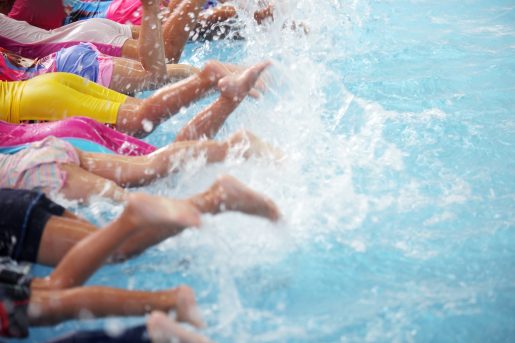Prevent drowning with these water safety tips
 “I only turned around for a few seconds and he was gone.” This was the cry of my patient’s mother after her son nearly drowned while playing in their home pool. She was watching her kids swim, but in just a moment, he disappeared. Thankfully, she was able to quickly locate him in the deep end of the pool and provide CPR until help arrived, and he was discharged home from our hospital the next day. However, as a pediatrician, I know that not every story ends that way.
“I only turned around for a few seconds and he was gone.” This was the cry of my patient’s mother after her son nearly drowned while playing in their home pool. She was watching her kids swim, but in just a moment, he disappeared. Thankfully, she was able to quickly locate him in the deep end of the pool and provide CPR until help arrived, and he was discharged home from our hospital the next day. However, as a pediatrician, I know that not every story ends that way.
Drowning is a leading cause of accidental death for children under 5 years old. In 2025, there have been 55 deaths caused by drownings in Texas and 11 of those have been in Harris county alone. In our hospitals, we see many patients who come in through our emergency center after being underwater too long who develop breathing problems, fluid in their lungs or even long-term damage.
Oftentimes we think drownings are limited to beaches or pools, but it can occur in any body of water, including bathtubs and in water as little as 1-2 inches. It’s a frightening reality, but that is why constant supervision of our kids is so important. That means always having your child within arm’s reach and giving them your undivided attention. Children should never be in or near water without a responsible adult watching them closely. All it takes is a slip into the deep end or a strong current in a lake or ocean for a child to go under.
Reduce the risk of drowning
Close supervision is extremely important, but we know that parents can’t be everywhere at once and we recognize that kids love to go where they’re not supposed to. Like the mom in the story, quickly searching the pool when you can’t find your child is helpful. Instead of assuming that your child has run off to the restroom or to play elsewhere, first do a sweep of the pool to make sure they haven’t gone under. Not all drownings are accompanied by cries for help and loud splashing; they could have slipped under quietly without you noticing.
You should have your pools and hot tubs fenced off on four sides with locks that your kids shouldn’t be able to open. If a child bypasses all these safeguards and drowns, starting CPR can improve their survival rate until help arrives. The Healthy Children’s website has a toolkit with drowning prevention tips that you can keep for personal use and/or share with other parents. You can search for nearby CPR classes with the American Red Cross.
Swim lessons
While learning to swim doesn’t prevent drowning, it is an important, life-saving skill. Unfortunately, not every child has the same access to swim lessons. In fact, drowning rates are higher in communities where swim lessons are not easily accessible, such as in Black, Native American and low-income families. It’s important to be aware of the free swimming programs located throughout our communities so you know where to go if you want your little one to learn how to swim at little to no cost. The greater Houston area has several of these programs such as the year-round aquatics program, SwimWise, through the Houston Parks and Recreation Department and even lessons at local apartment complexes that partner with the YMCA. You also can ask your pediatrician for more information on resources.
Summer is a time for relaxation and fun, and as a pediatrician, I want to keep it that way. With close supervision, safe swimming spaces and access to local swimming programs, we can all help prevent tragic accidents. Let’s keep our kids safe and enjoy the warm weather with peace of mind.
By Dr. Nancy Ukoh, pediatric resident at Baylor College of Medicine



